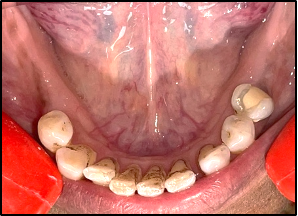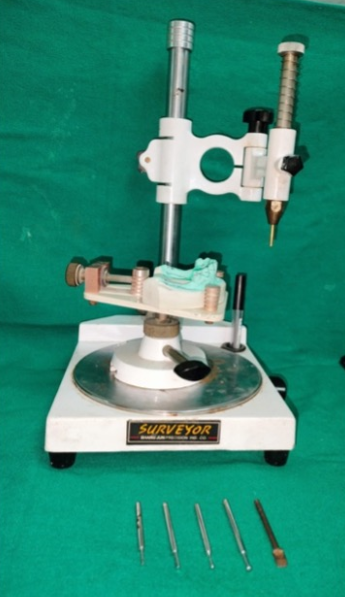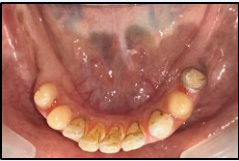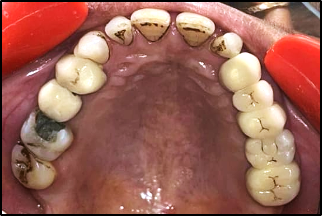Introduction
The integration of computer-aided design and computer-assisted manufacturing (CAD/CAM) has significantly transformed the landscape of dental prosthodontics. While initially applied to crown, inlay, and fixed partial denture fabrication, the utilization of CAD/CAM in the domain of removable partial dentures (RPDs) has emerged as a progressive avenue in prosthodontic treatment.1 This article delves into the evolving realm of CAD/CAM technologies in the fabrication of RPD alloy frameworks, specifically addressing the challenges associated with fit and patient satisfaction.
Removable partial dentures play a pivotal role in restoring oral function and maintaining overall oral health, particularly in the context of an aging population. With an escalating demand for comfortable and high-quality RPDs, ensuring an optimal fit becomes paramount.2 CAD designing has revolutionized the fabrication of cast partial dentures (CPDs), addressing various limitations associated with conventional techniques. In the traditional approach, CPDs were meticulously crafted through a series of labour-intensive steps involving wax patterns, investing, casting, and finishing. However, this method often resulted in inconsistencies in fit, marginal accuracy, and prolonged production timelines. Patient dissatisfaction, often attributed to lack of fit, has been documented in previous studies, highlighting the need for advancements in RPD fabrication techniques.
The integration of CAD technology streamlines the CPD fabrication process by digitizing the design phase. Through advanced software, dental professionals can precisely design the framework of the partial denture according to the patient's specific anatomical characteristics and functional requirements. This digital approach offers several notable advantages over traditional methods.
Another critical aspect where CAD designing excels is customization. CAD technology enables the customization of CPDs to suit individual patient needs and preferences. Dental professionals can easily modify the design parameters, such as the shape, size, and alignment of the framework, to achieve optimal aesthetics and function.
Traditionally, evaluating the fit of RPD frameworks has proven to be a complex endeavor. Existing studies, including those conducted in 2000s, have assessed fit through visual and tactile examinations, revealing notable shortcomings in the conventional fabrication processes. 3 The difficulty in achieving a satisfactory fit, especially in distal extension situations, has persisted over the past two decades.
To address these challenges, this article explores the progressive shift towards CAD/CAM technologies in RPD framework fabrication, with a particular emphasis on omitting the casting stage. The objective is to elucidate the feasibility and advantages of producing RPD alloy frameworks without the use of wax, showcasing a departure from traditional methodologies. 4 The article outlines the meticulous steps involved in this innovative process and validates the digital processes through the successful fitting of the RPD framework to the patient.
Case Presentation
Dental history reveals a 52-year-old female patient presented to the Department of Prosthodontics with a chief complaint of missing teeth on both sides of the lower jaw for the past 5-6 months. Previous dental history revealed extractions, root canal treatments and Metal Ceramic prosthesis wrt 13-15; 23-27. The patient expressed a philosophical approach to her condition. Clinical examination indicated Kennedy's Class 1 situation in the mandibular arch (Figure 1), diastema wrt 11-21 (Figure 2). Despite being presented with both fixed and removable treatment options, the patient choose the removable option due to financial constraints.
Diagnostic impressions were made and surveying was performed on the mandibular cast to determine a single path of insertion (Figure 3). Mouth preparation involved tooth preparation for teeth 44, 45, 33, and 34 (Figure 4), with a rest seat prepared on the occlusal surface of the Metal Ceramic crown (Figure 5). Following cementation, border moulding and functional impressions were made (Figure 6), followed by a pick-up impression using McLean's technique(Figure 7).
A 3-dimensional scan of the master cast was performed, and a scanned model was used for CPD designing. The RPI concept was applied on the left side, while an embrasure clasp with an occlusal rest was planned for the right side. A lingual bar major connector and ladder-like minor connector were chosen (Figure 8).
A resin framework trial (Figure 9) preceded the fabrication of the metal framework (Figure 10). The metal framework was then checked intra orally for the fit and stability. Bite registration was done. Subsequent teeth arrangement trial (Figure 11) led to the acrylisation of the cast partial denture (Figure 12). The finished and polished denture was then delivered to the patient (Figure 13).
Discussion
In the presented case, the significance of Cast Partial Dentures (CPDs) is paramount in addressing the prosthodontic needs of patients with partial edentulism. CPDs offer multifaceted solutions that not only restore oral function but also enhance aesthetics and overall well-being. By providing patients with restored chewing ability, speech clarity, and facial support, CPDs contribute significantly to improving their quality of life. Moreover, CPDs play a crucial role in preventing further dental issues by distributing occlusal forces evenly across remaining teeth, thereby preserving their integrity and preventing shifting.
The decision to employ computer-aided design (CAD) technology in CPD fabrication over conventional methods stems from its numerous advantages. CAD offers unparalleled precision and customization, facilitating the creation of highly accurate and patient-specific prostheses. 5 By digitizing the design process, CAD eliminates the limitations and inaccuracies associated with manual wax pattern fabrication, ensuring superior fit, comfort, and aesthetics. 6 Furthermore, CAD streamlines the production process, reducing labour time and material waste while enhancing workflow efficiency. Additionally, CAD enables seamless integration with computer-assisted manufacturing (CAM) technologies, allowing for rapid prototyping and production of CPDs with consistent quality and reliability.
In contrast to conventional wax pattern frameworks, 3D-printed frameworks offer several distinct advantages in CPD fabrication. Notably, 3D printing technology enables the creation of highly detailed and accurate frameworks, ensuring optimal fit and functionality. The elimination of manual labour in 3D printing reduces human error 7 and variability in the fabrication process, contributing to improved treatment outcomes and patient satisfaction. Moreover, 3D-printed frameworks can be easily customized to meet the unique anatomical and functional requirements of each patient, further enhancing treatment outcomes.
The integration of CAD technology and 3D printing in fabricating CPDs represents a significant advancement in prosthodontic treatment.8 This hybrid technique combines the precision and customization of CAD with the advantages of 3D-printed metal frameworks, offering unprecedented accuracy and reproducibility in prosthesis fabrication. The use of 3D printing technology to fabricate resin patterns that are subsequently invested and cast using conventional methods, often referred to as the "3D printed metal framework" technique, exemplifies this innovative approach.9
Resin frameworks, typically composed of biocompatible photopolymer resins that polymerize under UV light exposure, offer excellent strength, durability, and biocompatibility, making them ideal for dental prosthetic applications.10 Among various 3D printing technologies, stereolithography (SLA) stands out as the preferred choice for fabricating resin frameworks due to its exceptional accuracy, surface finish, and detail resolution. SLA printers are relatively affordable and easy to use, making them accessible to dental laboratories of all sizes. Moreover, SLA technology allows for the use of a wide range of biocompatible resin materials, offering versatility and flexibility in CPD fabrication.8
Overall, the adoption of CAD/CAM technologies, particularly in conjunction with 3D printing technology, enables clinicians to achieve superior treatment outcomes and patient satisfaction in CPD fabrication. This innovative approach represents a significant advancement in prosthodontic treatment, offering enhanced precision, customization, and efficiency in CPD fabrication.
Conclusion
The integration of CAD/CAM technologies in RPD fabrication represents a significant advancement in prosthodontic treatment. By embracing digital workflows, clinicians can achieve enhanced precision, efficiency, and patient satisfaction in RPD therapy. Continued innovation and research in this field are essential to realize the full potential of CAD/CAM technologies in improving oral health outcomes for patients requiring removable partial dentures.














